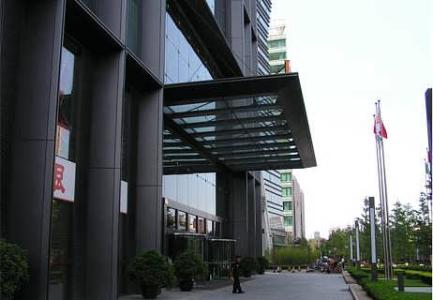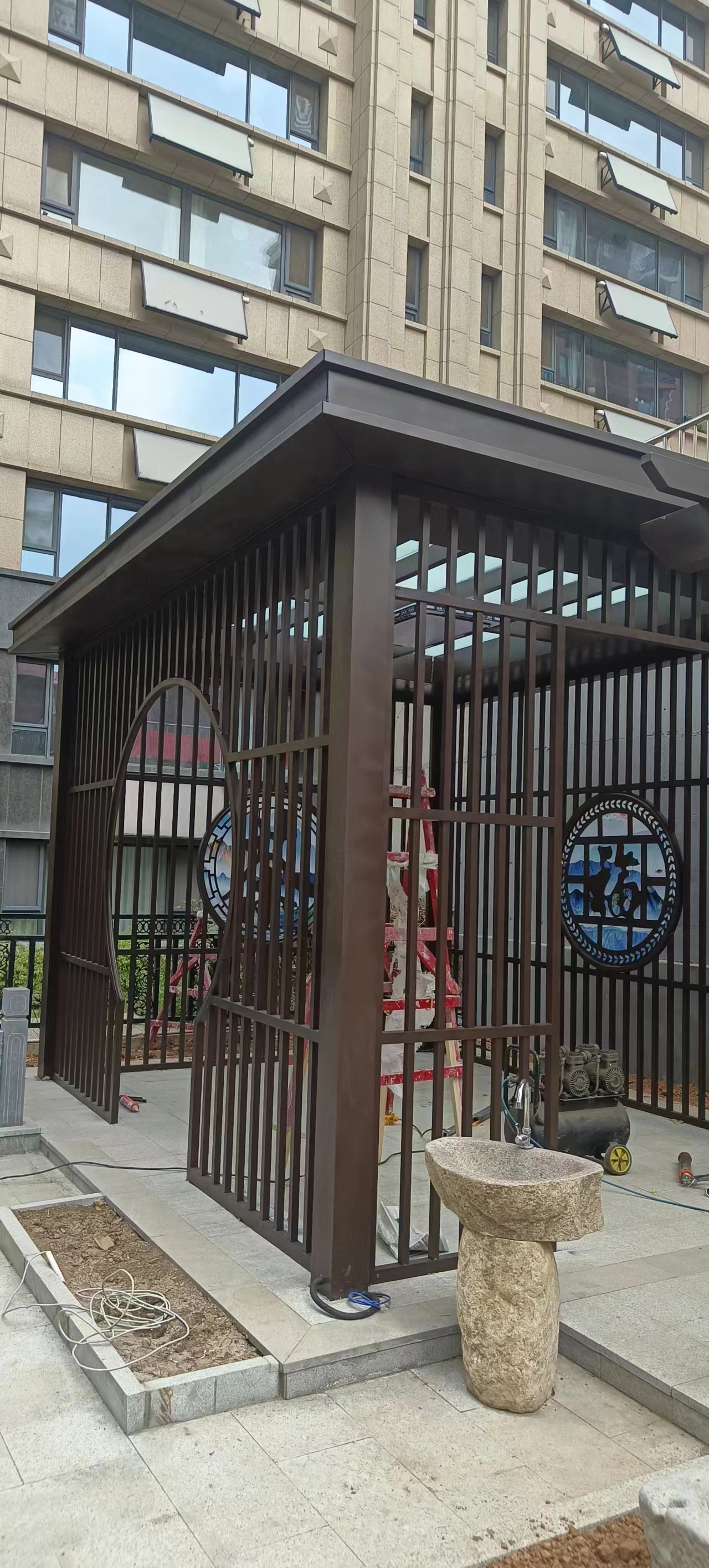行業(yè)動(dòng)態(tài)
dongnews
企業(yè)案例
case
聯(lián)系我們
- 聯(lián)系人:濟(jì)南燕翔鐵藝制品有限公司
- 手機(jī):15953126901
- 電話:15153196527
- 郵箱:785385551@qq.com
- 地址:濟(jì)南市天橋區(qū)歷山北路黃臺(tái)不銹鋼市場(chǎng)3區(qū)317

濟(jì)南輕型鋼結(jié)構(gòu)常見(jiàn)的質(zhì)量事故及緣由你知道嗎?
來(lái)源:http://qzone9781.cn 日期:2019-07-17 發(fā)布人: 瀏覽次數(shù):55次
輕鋼結(jié)構(gòu)常見(jiàn)的質(zhì)量事故及原因

Common Quality Accidents and Causes of Light Steel Structures
鋼結(jié)構(gòu)的抗拉和抗壓強(qiáng)度相對(duì)較高,組件部分很小,重量輕,結(jié)構(gòu)性能好,施工速度快,環(huán)境污染小,因此,鋼結(jié)構(gòu)工程適用于各種結(jié)構(gòu)形式和地方??偨Y(jié)了輕鋼結(jié)構(gòu)工程常見(jiàn)的質(zhì)量事故及原因。
Steel structure has relatively high tensile and compressive strength, small component parts, light weight, good structural performance, fast construction speed and less environmental pollution. Therefore, steel structure engineering is suitable for various structural forms and places. Common quality accidents and their causes in light steel structure engineering are summarized.
濟(jì)南輕型鋼結(jié)構(gòu)工程常見(jiàn)的質(zhì)量事故
Common Quality Accidents in Light Steel Structural Engineering
01. 常見(jiàn)的工程質(zhì)量事故
01. Common engineering quality accidents
(1)構(gòu)件彎曲變形或部分?jǐn)嗔?
(1) Bending deformation or partial fracture of members;
(2)構(gòu)件密封板或錐頭焊縫連接損壞;
(2) Damage of sealing plate or taper head weld connection of components;
(3關(guān)節(jié)變形或者斷裂;
(3) joint deformation or fracture;
(4)縫不飽滿或者有超過(guò)規(guī)定標(biāo)準(zhǔn)的氣泡、夾渣、微裂紋;
(4) The seams are not full or there are bubbles, slag inclusions and microcracks that exceed the prescribed standards;
(5)高強(qiáng)度螺栓從球節(jié)處斷裂或拔出;
(5) The high strength bolt breaks or pulls out from the ball joint;
(6)構(gòu)件在節(jié)點(diǎn)處相互碰撞,支撐網(wǎng)構(gòu)件在上弦支承時(shí)與支撐結(jié)構(gòu)碰撞;
(6) Components collide with each other at joints, and support network components collide with support structure when supporting the upper chord.
(7)軸承節(jié)點(diǎn)位移;
(7) Bearing node displacement;
(8)網(wǎng)架撓度過(guò)大,超過(guò)設(shè)計(jì)中規(guī)定的相應(yīng)設(shè)計(jì)值的1.15倍。
(8) The deflection of the space truss is too large, which exceeds 1.15 times of the corresponding design value stipulated in the design.
濟(jì)南輕型鋼結(jié)構(gòu)
2. 剛構(gòu)體工程中常見(jiàn)的質(zhì)量事故
2. Common quality accidents in rigid frame engineering
(1)主要部件的變形和變形;
(1) Deformation and deformation of main components;
(2)預(yù)埋件不符合圖紙和規(guī)范要求,高差、間距超過(guò)標(biāo)準(zhǔn);
(2) Embedded parts do not meet the requirements of drawings and specifications, and the height difference and spacing exceed the standard.
(3)鋼框架整體垂直度與整體平面彎曲偏差超差,柱端板孔不對(duì)應(yīng),尺寸不對(duì)齊;
(3) The deviation between the overall verticality and the overall plane bending of the steel frame is excessive, and the holes in the end plates of the columns do not correspond to each other, and the dimensions are not uniform.
(4)主應(yīng)力節(jié)點(diǎn)焊縫不飽滿或有氣泡、夾渣、微裂紋超過(guò)規(guī)定標(biāo)準(zhǔn);
(4) The weld seam of the principal stress joint is not full or there are bubbles, slag inclusions and microcracks exceeding the prescribed standards.
(5)輔助穩(wěn)定結(jié)構(gòu),如:支架、拉桿、角撐等。
(5) Auxiliary stabilization structure, such as bracket, tie rod, angle brace, etc.
(6)二次元件不符合質(zhì)量要求。
(6) The secondary components do not meet the quality requirements.
濟(jì)南輕型鋼結(jié)構(gòu)
更主要的原因
The main reason
1. 設(shè)計(jì)原因
1. Design Reasons
(1)結(jié)構(gòu)形式選擇不合理,桿件截面匹配不合理,忽略了桿件初始彎曲、初始偏心和二次應(yīng)力的影響,設(shè)計(jì)時(shí)低、缺載或荷載組合計(jì)算不當(dāng);
(1) The selection of structural forms is unreasonable, the cross-section matching of members is unreasonable, the influence of initial bending, initial eccentricity and secondary stress of members is neglected, and the calculation of low, lack of load or load combination is inappropriate in design.
(2)選材不合理;
(2) unreasonable selection of materials;

(3)計(jì)算方法選擇、假設(shè)條件、計(jì)算機(jī)程序未發(fā)現(xiàn)錯(cuò)誤;
(3) No errors were found in the selection of calculation methods, assumptions and computer programs.
(4)結(jié)構(gòu)設(shè)計(jì)計(jì)算后,不經(jīng)復(fù)核,擅自更換材料,導(dǎo)致構(gòu)件超設(shè)計(jì)強(qiáng)度;
(4) After structural design calculation, the material is replaced without review, which leads to the component exceeding the design strength.
(5)圖紙錯(cuò)誤或不完整。尺寸標(biāo)注混亂,設(shè)計(jì)說(shuō)明不明確,遺漏材料、工藝要求、施工程序和有特殊要求的部件的;
(5) The drawings are incorrect or incomplete. Dimension labeling is confused, design instructions are not clear, materials, process requirements, construction procedures and components with special requirements are omitted.
(6)節(jié)點(diǎn)構(gòu)造錯(cuò)誤,細(xì)節(jié)考慮不充分。
(6) The construction of nodes is wrong and the details are not fully considered.
2. 工作的原因
2. Reasons for Work
(1)管理混亂,規(guī)格、鋼號(hào)、材料混用;
(1) Confused management, mixed use of specifications, steel grades and materials;
(2)零件切割尺寸錯(cuò)誤,零件縱橫比不符合設(shè)計(jì)要求;
(2) The cutting dimension of the parts is wrong, and the aspect ratio of the parts does not meet the design requirements.
(3)切割槽未打孔對(duì)接時(shí),網(wǎng)架桿焊縫未按設(shè)計(jì)要求內(nèi)襯或焊接;
(3) When the cutting groove is not drilled and docked, the welding seam of the grid pole is not lined or welded according to the design requirements.
(4)連接高強(qiáng)螺栓不合格;
(4) Unqualified connecting high-strength bolts;
(5)零件加工缺陷,螺栓球孔角度偏差較大;
(5) Machining defect of parts, big deviation of bolt hole angle;
(6)焊縫質(zhì)量差,焊接角度尺寸不符合設(shè)計(jì)要求。
(6) The quality of the weld is poor and the dimension of the welding angle does not meet the design requirements.
3. 網(wǎng)絡(luò)框架安裝原因
3. Reasons for Network Framework Installation
(1)地面拼裝時(shí),支撐點(diǎn)不均勻,受力不合理,拼裝過(guò)程中誤差積累,部分桿件出現(xiàn)錯(cuò)誤,導(dǎo)致受力變化,導(dǎo)致網(wǎng)架或部分桿件變形。
(1) When assembling on the ground, the support points are not uniform, the force is unreasonable, the errors accumulate in the assembling process, and some of the members have errors, resulting in changes in the force, leading to the deformation of the grid or some of the members.
(2)焊接工藝和焊接順序錯(cuò)誤,導(dǎo)致焊接應(yīng)力和變形。
(2) The welding process and welding sequence are wrong, resulting in welding stress and deformation.
(3)在整體吊裝過(guò)程中,吊裝點(diǎn)的選擇不合理,吊裝點(diǎn)沒(méi)有反力校核計(jì)算,桿件超應(yīng)力校核計(jì)算,撓度校核計(jì)算,超應(yīng)力點(diǎn)沒(méi)有必要的加固措施。
(3) In the whole hoisting process, the selection of hoisting point is unreasonable, the hoisting point has no reaction checking calculation, the bar overstress checking calculation, deflection checking calculation, and the overstress point has no necessary reinforcement measures.
(4)在整體吊裝過(guò)程中,各吊裝點(diǎn)的吊裝速度不同,位移和高差超過(guò)允許范圍,造成變形和損壞。
(4) In the whole hoisting process, the hoisting speed of each hoisting point is different, and the displacement and height difference exceed the allowable range, resulting in deformation and damage.
(5)施工方案選擇錯(cuò)誤。根據(jù)網(wǎng)架的結(jié)構(gòu)形式和現(xiàn)場(chǎng)施工條件,不合理選擇施工方案。安裝過(guò)程中不能形成幾何不變的系統(tǒng),造成變形和破壞。
(5) Error in selection of construction scheme. According to the structure form of grid structure and site construction conditions, the construction scheme is unreasonably selected. Geometric invariant system can not be formed during installation, resulting in deformation and damage.
(6)預(yù)埋件、預(yù)埋螺栓或支撐網(wǎng)架的柱子偏差較大,使其難以就位。就位力的大小會(huì)引起構(gòu)件受力狀態(tài)的變化和變形。
(6) Pre-embedded parts, pre-embedded bolts or pillars supporting space trusses have large deviations, which make it difficult to put them in place. The magnitude of the in-situ force will cause the change and deformation of the member's stress state.
(7)安裝人員粗心,桿位和球角錯(cuò)誤。
(7) Installers are careless, pole position and ball angle are wrong.
(8)在上弦桿支承情況下,誤差積累過(guò)大,導(dǎo)致支承位移和腹板與支承面碰撞。
(8) When the upper chord is supported, the accumulation of errors is too large, resulting in support displacement and web collision with the supporting surface.
4. 安裝剛性框架的原因
4. Reasons for Installation of Rigid Frames
(1)長(zhǎng)構(gòu)件在運(yùn)輸和堆放過(guò)程中墊層放置不均勻,導(dǎo)致變形變形。
(1) Uneven cushion placement of long members during transportation and stacking results in deformation and deformation.
(2)預(yù)埋螺栓位置不正確,安裝過(guò)程中沒(méi)有復(fù)測(cè)或修正,導(dǎo)致柱、梁變形變形,鋼框架整體垂直度、平面彎曲度超差。
(2) The position of embedded bolts is incorrect, and there is no re-measurement or correction during installation, which results in deformation of columns and beams, and the overall verticality and plane bending of steel frames are out of tolerance.
(3)柱端板孔位不對(duì)應(yīng)或位置不正確。安裝時(shí)端板未對(duì)準(zhǔn),螺栓未按順序緊固。
(3) The hole position of column end plate is not corresponding or the position is incorrect. The end plate is not aligned and the bolts are not tightened in sequence.
(4)未按焊接程序操作或現(xiàn)場(chǎng)焊接中焊工技術(shù)問(wèn)題導(dǎo)致焊縫不飽滿或有氣泡、夾渣、微裂紋。
(4) Failure to operate in accordance with welding procedures or technical problems of welders in field welding results in unsaturated welds or air bubbles, slag inclusion and microcracks.
(5)安裝過(guò)程中圖紙理解不到位,導(dǎo)致個(gè)別零件位置錯(cuò)誤。
(5) In the installation process, the drawings are not understood properly, resulting in errors in the position of individual parts.
(6)安裝前沒(méi)有根據(jù)項(xiàng)目的實(shí)際情況制定詳細(xì)的施工計(jì)劃和技術(shù)說(shuō)明,導(dǎo)致施工過(guò)程的顛倒。
(6) Before installation, detailed construction plans and technical instructions were not formulated according to the actual situation of the project, which led to the reversal of the construction process.
(7)施工不按順序進(jìn)行,下一道工序施工鋼框架結(jié)構(gòu)不穩(wěn)定,造成整體不穩(wěn)定。
(7) The construction is not carried out in sequence, and the steel frame structure is unstable in the next working procedure, resulting in overall instability.
(8)鋼柱剛與插入柱基礎(chǔ)連接時(shí),混凝土無(wú)法達(dá)到強(qiáng)度或柱腳固定不牢固,上部構(gòu)件安裝,導(dǎo)致結(jié)構(gòu)失穩(wěn)。
(8) When the steel column is rigidly connected with the inserting column foundation, the concrete can not reach the strength or the column foot is not fixed firmly, and the upper components are installed, resulting in structural instability.
以上是濟(jì)南輕型鋼結(jié)構(gòu)為大家整理的相關(guān)內(nèi)容,想要了解更多內(nèi)容,歡迎訪問(wèn)網(wǎng)站:http://qzone9781.cn









